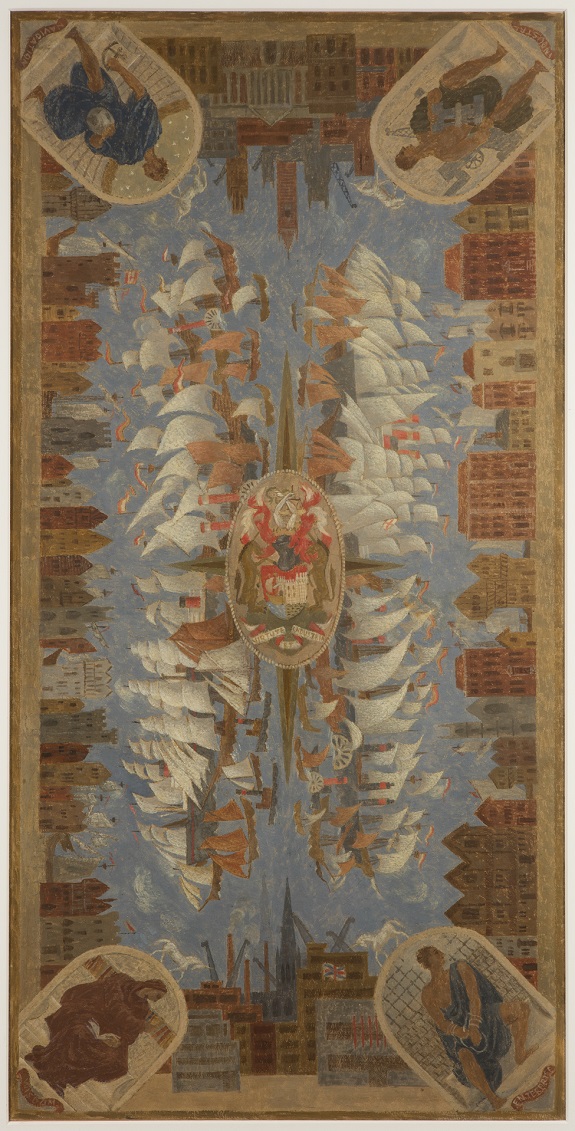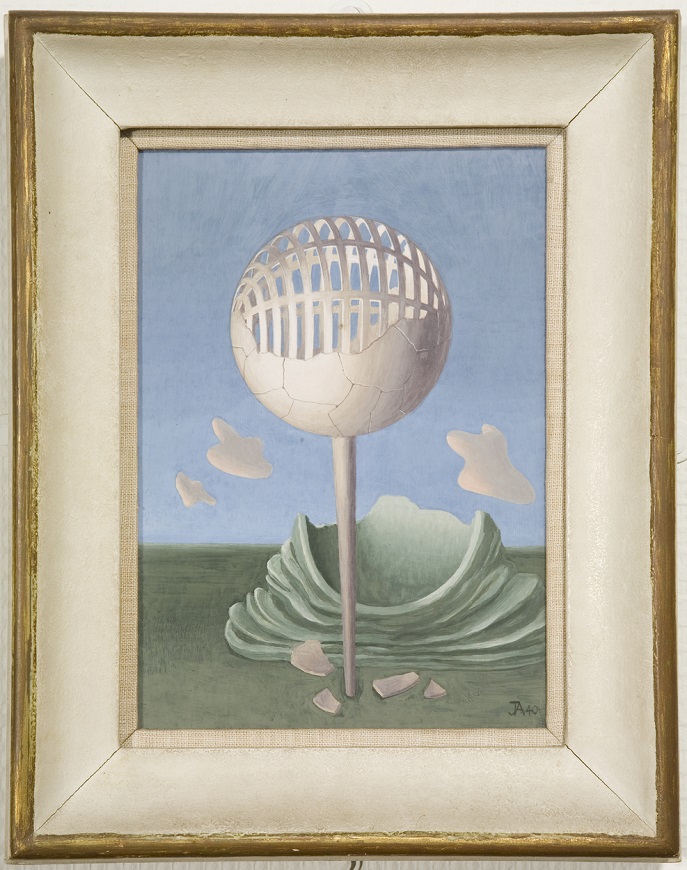The Painted Ceiling
Posted on by Fay Curtis.
By Trevor Coombs, Documentation Assistant, Fine Art
Have you ever attended a full council meeting at City Hall?
Perhaps as a member of the public interested in one of the agenda items, or maybe you are a council officer doing your job, or a councillor?
During a lull in proceedings, you look up and see a ceiling full of sails and ships surrounded by a border of buildings, some iconic and recognisable – such as St Mary Redcliff Church, Cabot Tower (also visible through the council chamber windows) and the harbour cranes – others seemingly imagined, or maybe they were demolished years ago.
In the middle of the ceiling is the city’s coat of arms urging past and present generations towards virtue and industry. But who are the four corner figures in arch-shaped frames with unicorns perched above?
You tilt your head to make out their titles, Navigation, Industry, Enterprise, Wisdom, four personifications of this merchant and maritime city – and then you realise your agenda item is up next, or a decision needs to be minuted, or your opposite number in the debate has stopped talking, and you are brought back down to earth.

Original design for the Bristol council chamber ceiling, by John Armstrong. Tempera and chalk on paper (K6059)
In 1953, the artist John Armstrong (1893-1973) was commissioned by the Edwin Austin Abbey Memorial Trust, a charity dedicated to mural painting, to design and paint the council chamber ceiling for the new Bristol Council House (as it was then known).
Another artist, Thomas Monnington (1902-1976), was commissioned by the same trust to paint the ceiling of the conference hall. Monnington created an abstract, geometric pattern inspired by the atomic age, a design suggestive of radiating beams and spinning electrons, and painted it directly onto the conference hall ceiling (see featured image).
Armstrong chose to visualize Bristol’s maritime, industrial and architectural history up to the present day. Between them, the two artists captured the past, present and future.
John Armstrong, who had just turned sixty when he commenced the commission, knew that the physical strain of painting a 60 x 30 foot design onto a ceiling would be too much for him, and decided to work on ten large canvas strips each measuring 6 x 30 feet.
This work was undertaken in the basement of the Passmore Edwards Gallery, Newlyn, near to where he lived in Lamorna, Cornwall. The canvases were held on rollers while they were painted, and by moving them up and down he was able to work on up to three at a time.
He employed an assistant, twenty-two year-old art college graduate Mary Collett, who painted most of the sails and some of the buildings.
The transfer of the tempera and chalk design into paint took ten months to complete. The sections were then affixed to the bare plaster ceiling of the council chamber with an adhesive of white lead and gold size, the joins painted out and a gold trim placed around its edge.
When the building was officially opened by the Queen on 17 April 1956, The Times called it one of the most extensive and ambitious modern English examples of the particular form of mural painting [and] a symbolic tribute to Bristol’s greatness as a port and a city.

Mary Collett and Annette Armstrong, seen in the middle, with the artist’s daughter and members of Mary Collett’s family (reproduced with the kind permission Cathy Sayers, Mary Collett and the Armstrong family)
In September, 2016, the artist’s widow, Annette Armstrong and also John Armstrong’s original assistant, Mary Collett, came to Bristol to be interviewed and filmed in the council chamber, where they talked about the ceiling mural.

‘Icarus’ by John Armstrong (1940). Tempera on panel (K5049)
The film, which accompanies a touring exhibition, has just been released and can be seen on YouTube. It lasts 15 minutes and the section filmed in the council chamber commences at 9 minutes 40 seconds.
In 2004, Bristol Museum & Art Gallery purchased the original design for the ceiling (object number K6059), and this is featured in the film. John Armstrong’s artistic output ranged widely across figurative and abstract painting, stage and film sets and costume design,
commercial art, advertising and murals for public and private buildings.
Apart from the stage and film works, Bristol owns examples of each, some of which are also featured in the film. Others can be seen on Collections Online.
Reference:
- Feature image – Original design for the Bristol conference hall ceiling, by Thomas Monnington. Watercolour on paper (K6259)